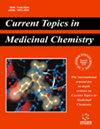Pro-Inflammatory Signaling Cascade Markers, Oxidative Stress-Inflammatory Signaling Axis, and Chronic Total Occlusion of Tibial Artery in Elderly Patients Suffering from Occlusion of Coronary Arteries
IF 2.9
4区 医学
Q3 CHEMISTRY, MEDICINAL
Current topics in medicinal chemistry
Pub Date : 2024-08-28
DOI:10.2174/0115680266306301240821073416
引用次数: 0
Abstract
Introduction: Oxidative response is a risk factor in the progression of arterial atherosclerosis. Objective: This research study aimed to examine the effects of oxidative response on atherosclerotic susceptibility as well as the development of arteriosclerosis occlusions of the tibial artery through pro-inflammatory mediator genes in elderly patients with occlusion of coronary arteries. Methods: We determined that oxidative stress biomarkers (Malondialdehyde-modified Low-density Lipoprotein (MDA-LDL), Oxidized Low-density Lipoprotein (Ox-LDL) as well as Heme Oxygenase- 1 (HO-1)] and the expressions of pro-inflammatory mediator genes [Toll-like Receptor 4 (TLR4), Nuclear Factor kappa-B (NF-κB), Myeloid Differentiating factor 88 (MyD88) and Growth Arrest-specific gene 6 (GAS6)] have an impact on the severity of arteriosclerosis occlusions of tibial artery in elderly patients suffering from occlusion of coronary arteries. Results: Levels of MDA-LDL, Ox-LDL, HO-1, TLR4, NF-κB, MyD88, and GAS6 were increased in the occlusion of tibial arteries + two-vessel coronary occlusion group compared to the CON group and occlusion of tibial arteries + one-vessel coronary occlusion group, respectively (p < 0.001); they were also elevated in occlusion of tibial arteries + multiple-vessel coronary occlusion group compared to occlusion of tibial arteries + one-vessel coronary occlusion group and occlusion of tibial arteries + two-vessel coronary occlusion group, respectively (P < 0.001). This has indicated the key roles of oxidative stress and pro-inflammatory mediator genes in arteriosclerosis occlusions of tibial artery in elderly patients with occlusion of coronary arteries. Conclusion: Oxidative response may promote the expressions of inflammatory genes and enhance susceptibility to arteriosclerosis occlusions of the tibial artery in elderly patients with chronic total coronary occlusions.冠状动脉闭塞老年患者的促炎症信号级联标记、氧化应激-炎症信号轴与胫动脉慢性全闭塞
导言氧化反应是动脉粥样硬化恶化的一个危险因素。研究目的本研究旨在探讨氧化反应对动脉粥样硬化易感性的影响,以及通过促炎介质基因对老年冠状动脉闭塞患者胫骨动脉硬化闭塞症的发展产生的影响。方法核因子卡巴-B(NF-κB)、髓样分化因子 88(MyD88)和生长停滞特异基因 6(GAS6)]的表达对老年冠状动脉闭塞患者胫动脉动脉硬化闭塞症的严重程度有影响。研究结果MDA-LDL、Ox-LDL、HO-1、TLR4、NF-κB、MyD88和GAS6的水平在胫动脉闭塞+双血管冠状动脉闭塞组分别高于CON组和胫动脉闭塞+单血管冠状动脉闭塞组(P < 0.001);与胫动脉闭塞+一脉冠状动脉闭塞组和胫动脉闭塞+二脉冠状动脉闭塞组相比,胫动脉闭塞+多脉冠状动脉闭塞组也分别升高(P < 0.)这表明氧化应激和促炎介质基因在老年冠状动脉闭塞患者胫动脉硬化闭塞中起着关键作用。结论氧化反应可能会促进炎症基因的表达,并增加慢性冠状动脉全闭塞老年患者胫动脉硬化闭塞的易感性。
本文章由计算机程序翻译,如有差异,请以英文原文为准。
求助全文
约1分钟内获得全文
求助全文
来源期刊
CiteScore
6.40
自引率
2.90%
发文量
186
审稿时长
3-8 weeks
期刊介绍:
Current Topics in Medicinal Chemistry is a forum for the review of areas of keen and topical interest to medicinal chemists and others in the allied disciplines. Each issue is solely devoted to a specific topic, containing six to nine reviews, which provide the reader a comprehensive survey of that area. A Guest Editor who is an expert in the topic under review, will assemble each issue. The scope of Current Topics in Medicinal Chemistry will cover all areas of medicinal chemistry, including current developments in rational drug design, synthetic chemistry, bioorganic chemistry, high-throughput screening, combinatorial chemistry, compound diversity measurements, drug absorption, drug distribution, metabolism, new and emerging drug targets, natural products, pharmacogenomics, and structure-activity relationships. Medicinal chemistry is a rapidly maturing discipline. The study of how structure and function are related is absolutely essential to understanding the molecular basis of life. Current Topics in Medicinal Chemistry aims to contribute to the growth of scientific knowledge and insight, and facilitate the discovery and development of new therapeutic agents to treat debilitating human disorders. The journal is essential for every medicinal chemist who wishes to be kept informed and up-to-date with the latest and most important advances.

 求助内容:
求助内容: 应助结果提醒方式:
应助结果提醒方式:


